Abstract
Experiments examined the effects of acute doses of chlordiazepoxide upon ethanol self-administration in the rat. A concurrent-schedule procedure was used that employed choice between ethanol (5%) and a second fluid (either water or a 1% sucrose solution). When ethanol and water were the available fluids, chlordiazepoxide at doses of 15 and 20 mg/kg reduced ethanol-reinforced responding and intake, with a greater reduction occurring at the 20 mg/kg dose. However, when ethanol and sucrose were concurrently available, in many rats only the 20 mg/kg dose of chlordiazepoxide reduced ethanol-reinforced responding. The differences in dose response function occurred in most animals without large changes in the baseline ethanol-reinforced responding across the two concurrent conditions. Thus the dose-effect curve relating chlordiazepoxide and ethanol self-administration can be altered, dependent upon the nature of the concurrently available reinforcers.
Full text
PDF
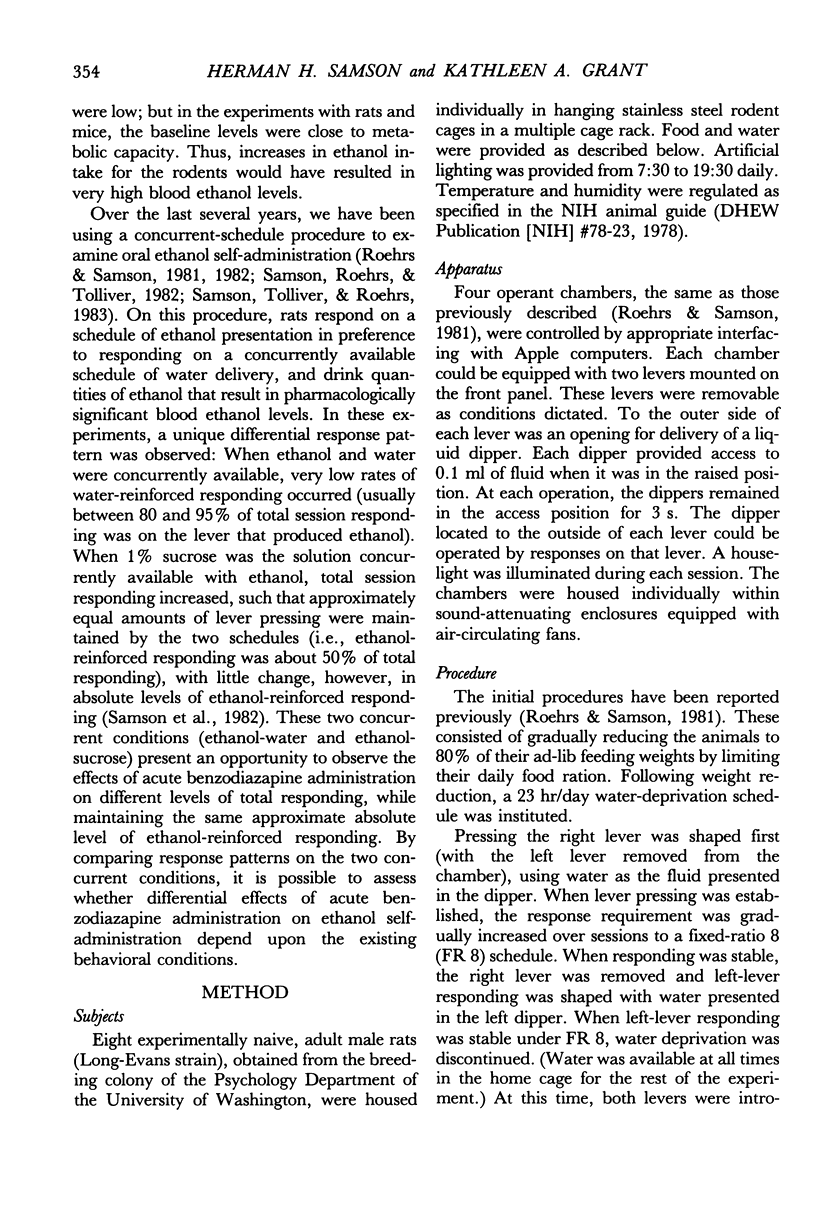
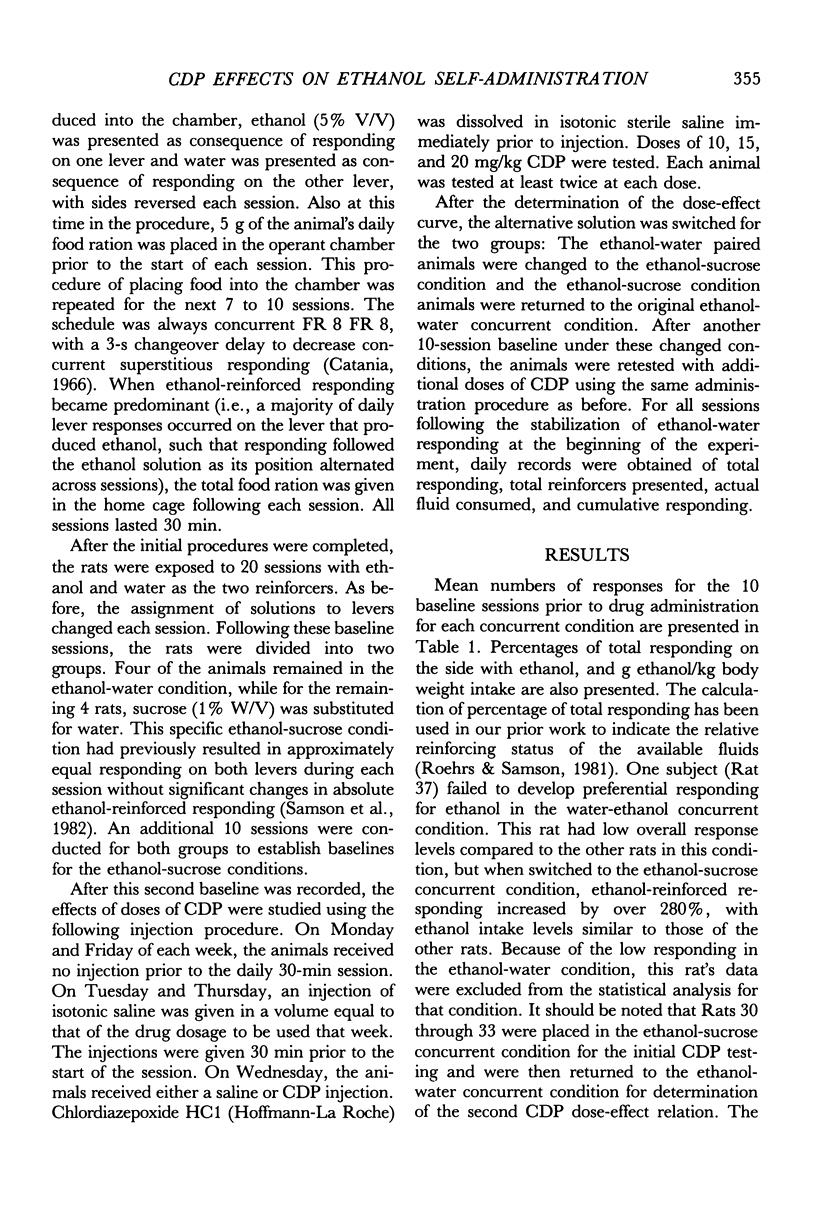
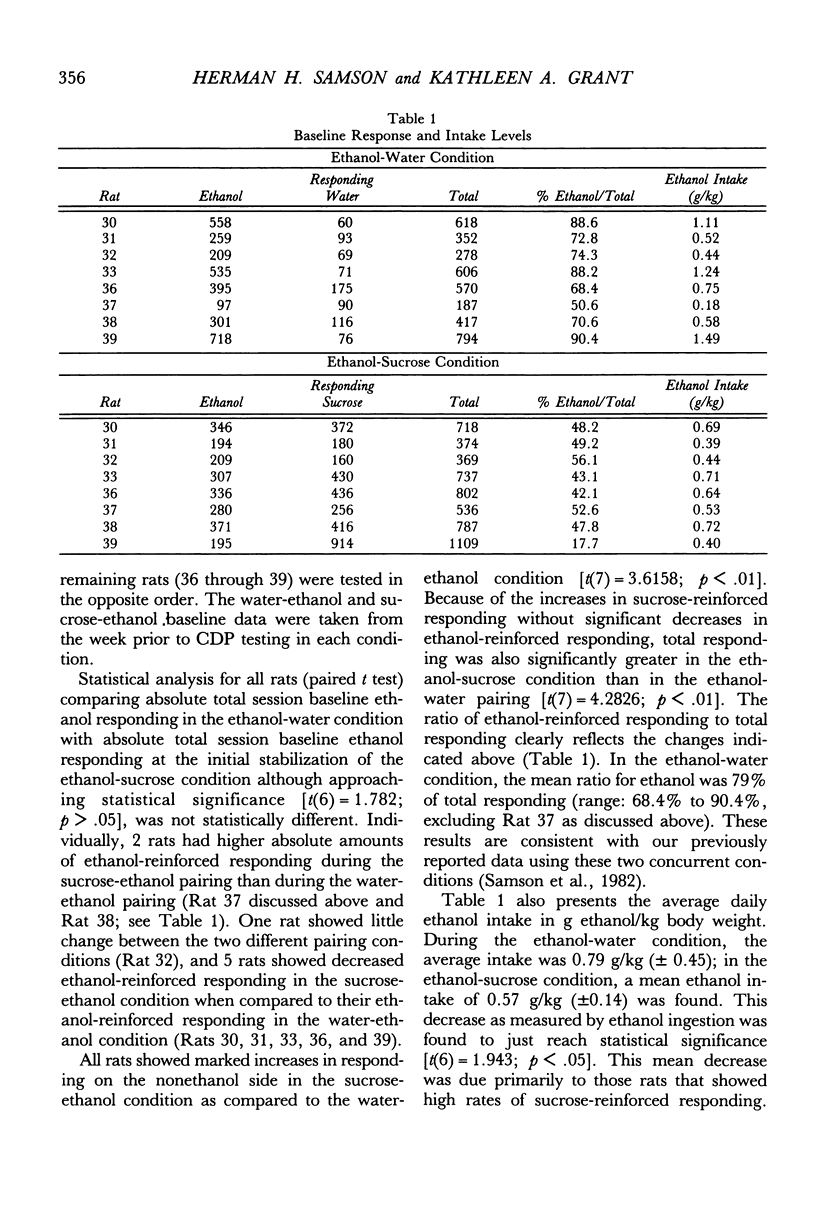
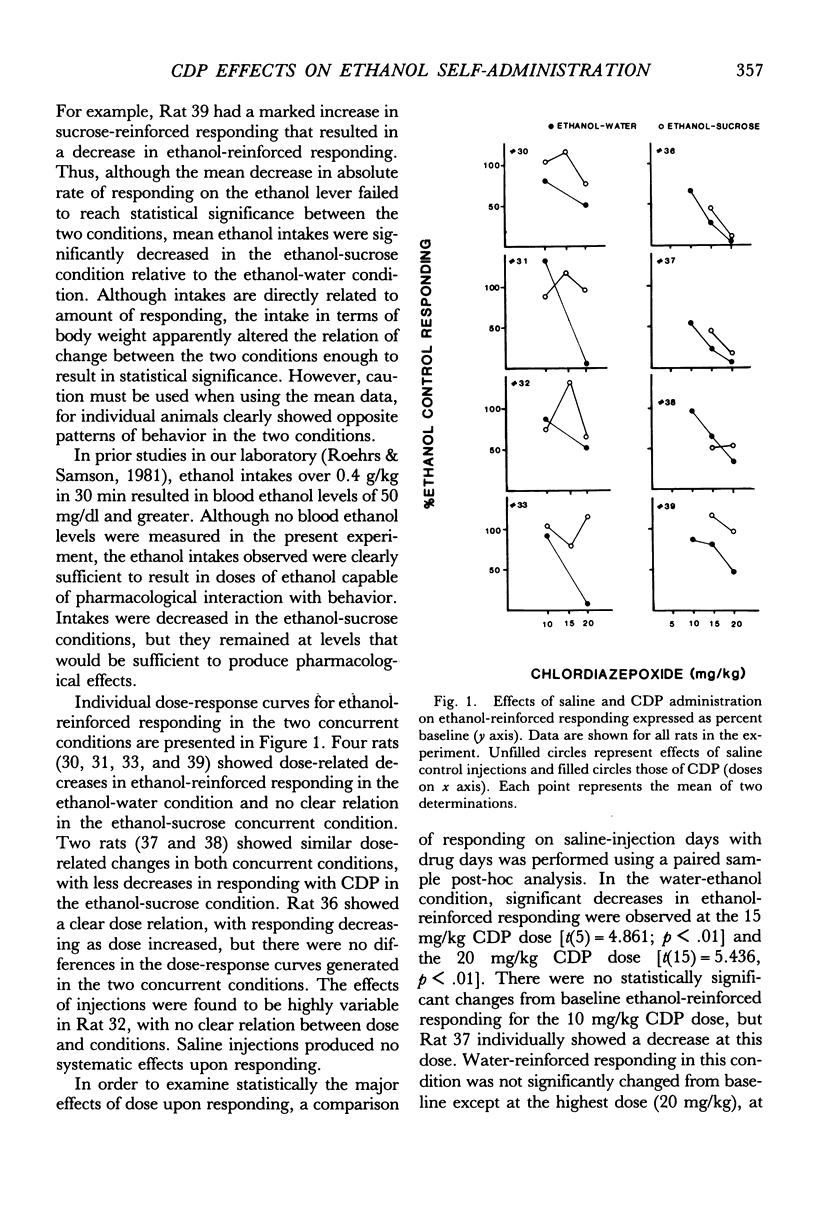
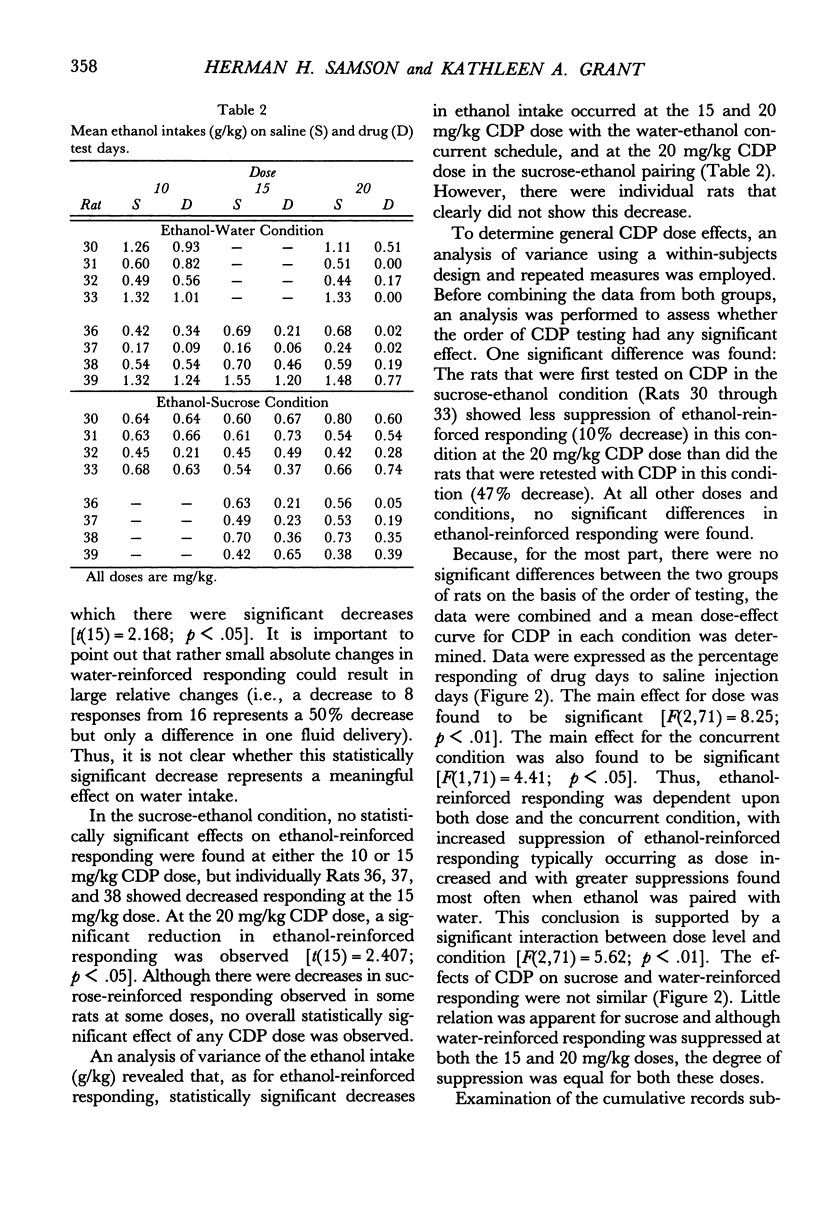
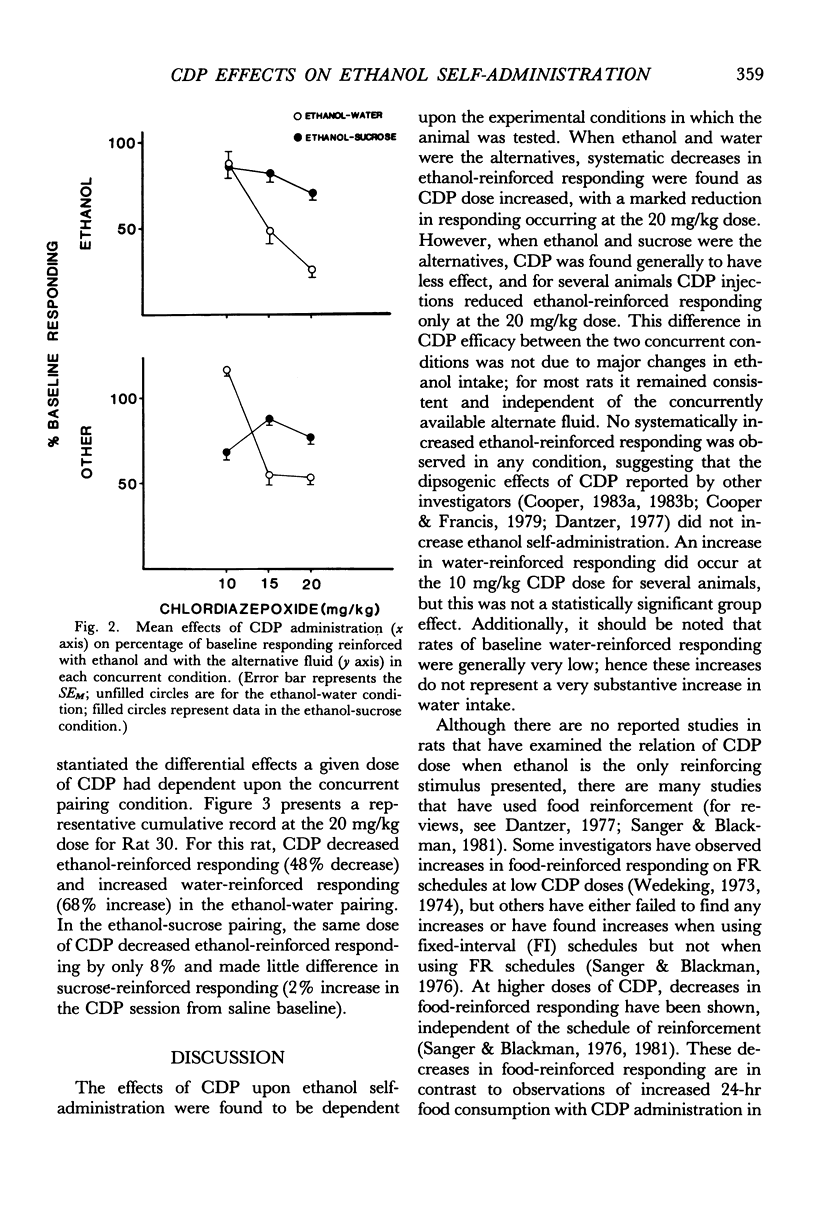
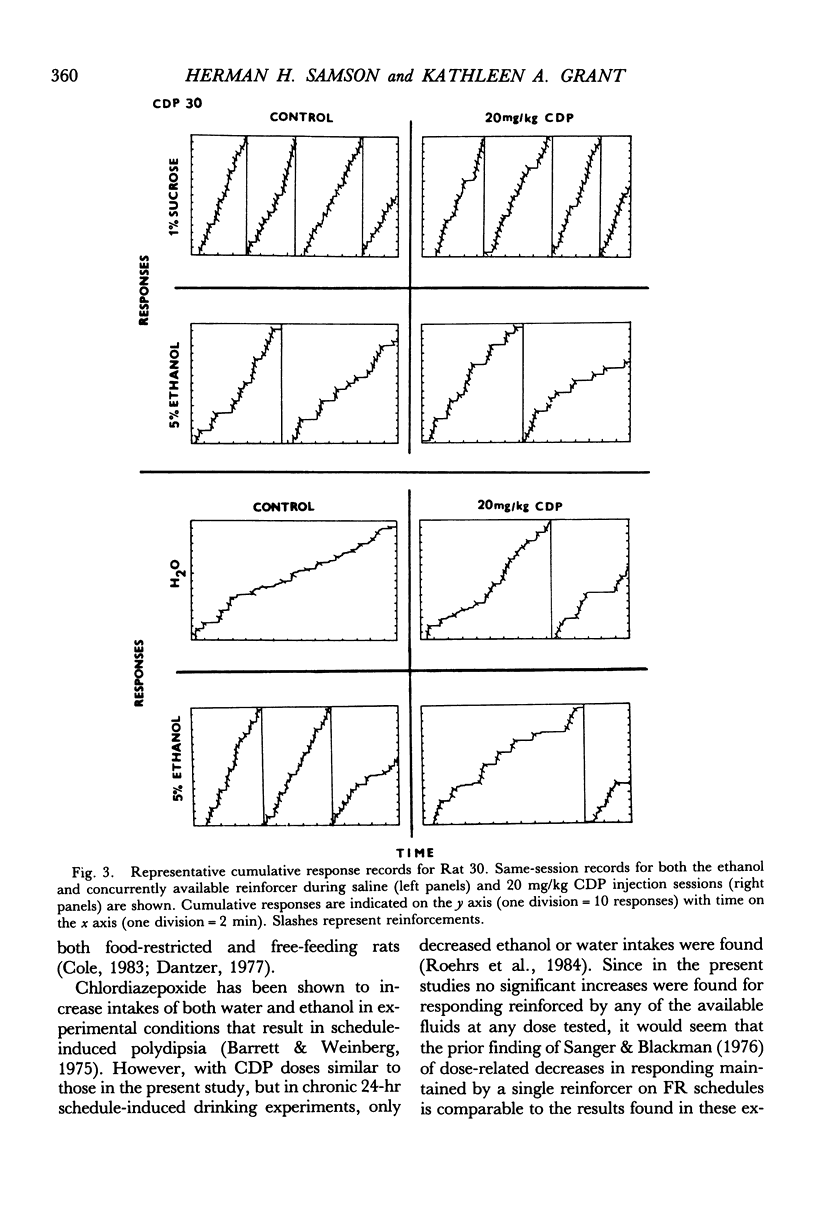

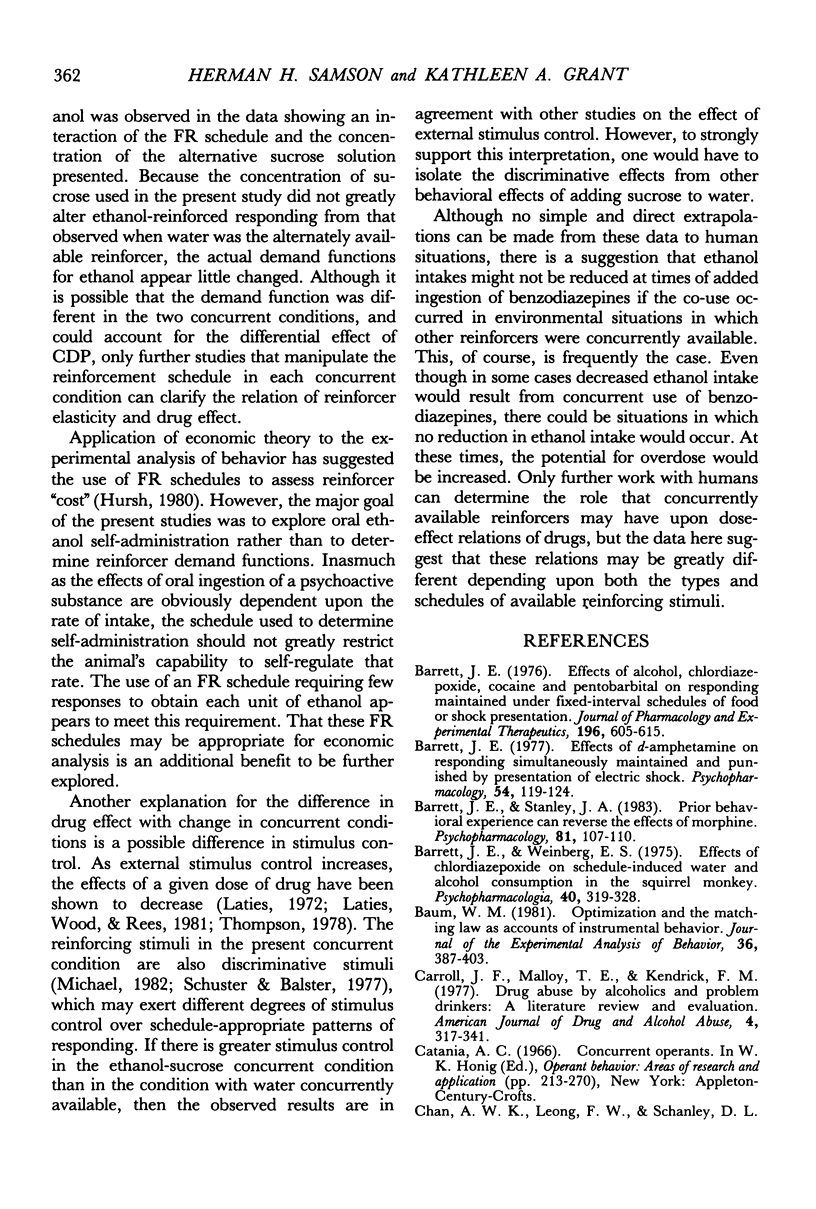
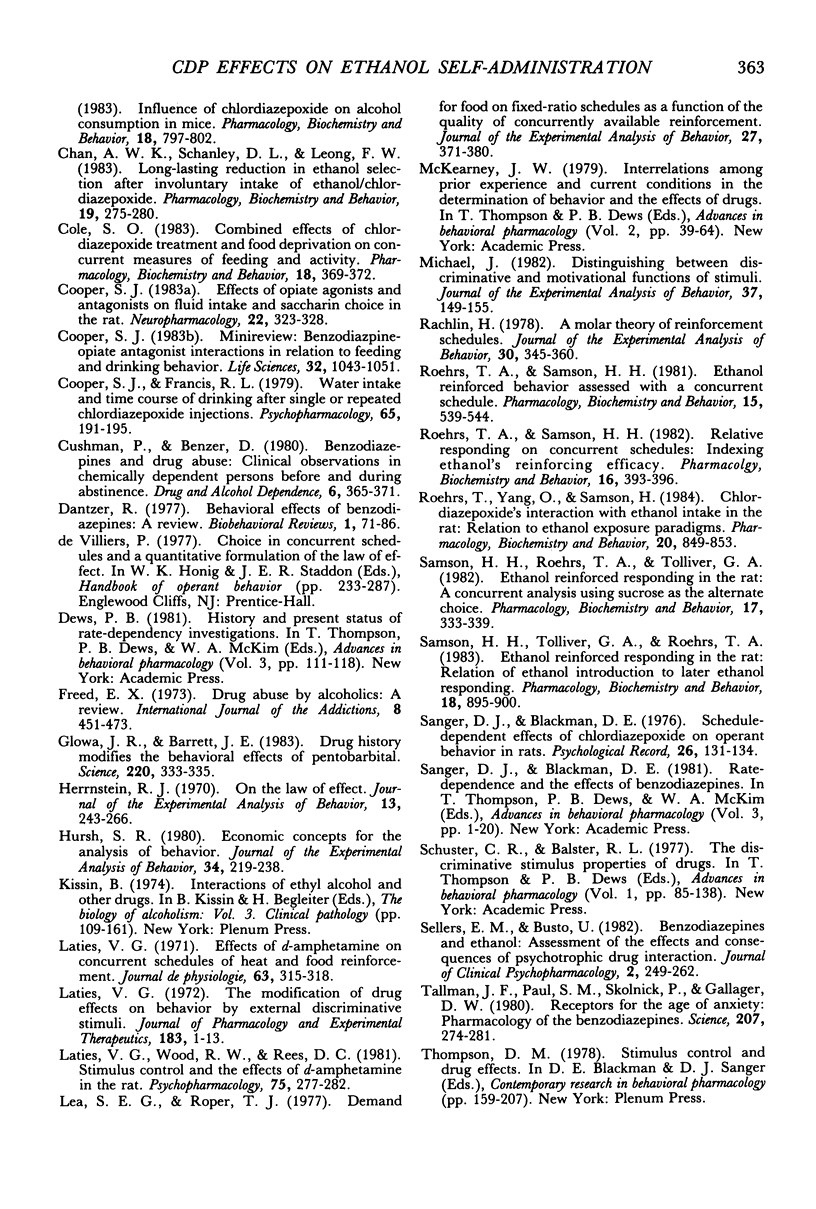
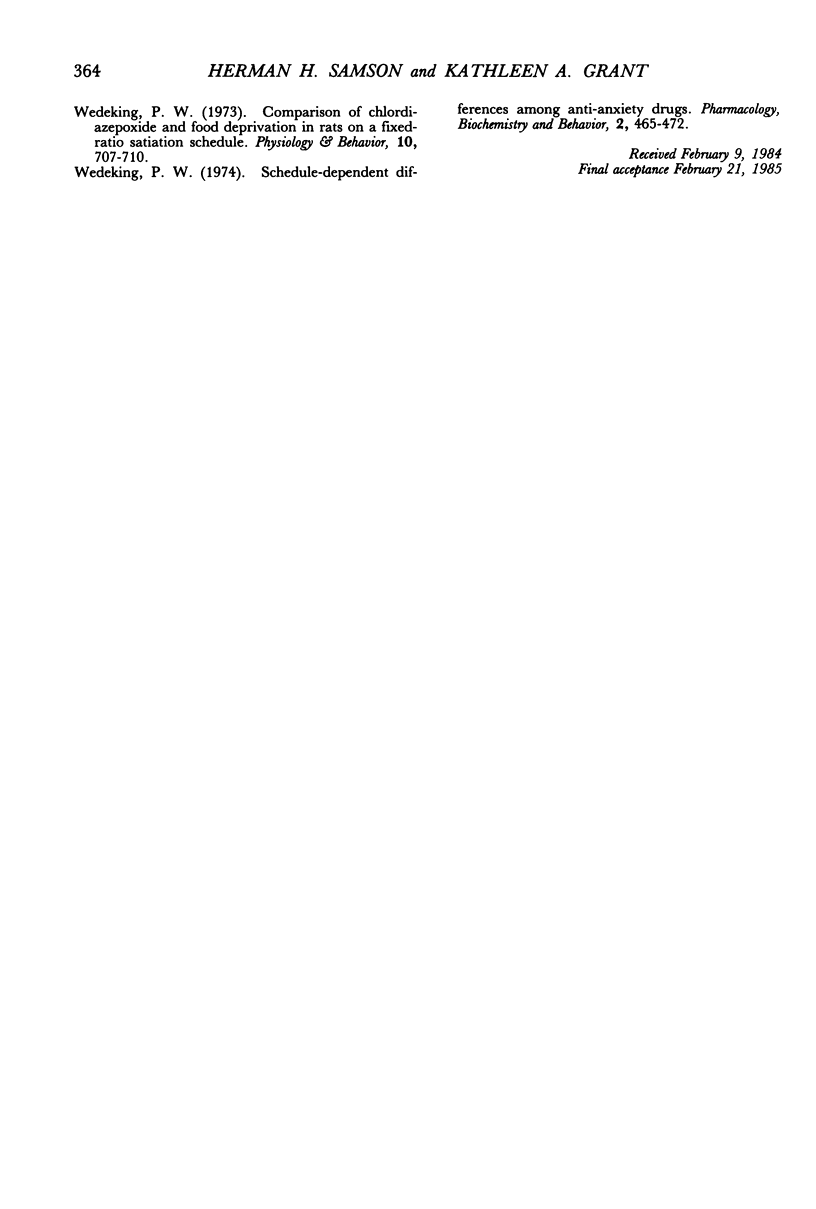
Selected References
These references are in PubMed. This may not be the complete list of references from this article.
- Barrett J. E. Effects of alcohol, chlordiazepoxide, cocaine and pentobarbital on responding maintained under fixed-interval schedules of food or shock presentation. J Pharmacol Exp Ther. 1976 Mar;196(3):605–615. [PubMed] [Google Scholar]
- Barrett J. E. Effects of d-amphetamine on responding simultaneously maintained and punished by presentation of electric shock. Psychopharmacology (Berl) 1977 Oct 20;54(2):119–124. doi: 10.1007/BF00426766. [DOI] [PubMed] [Google Scholar]
- Barrett J. E., Stanley J. A. Prior behavioral experience can reverse the effects of morphine. Psychopharmacology (Berl) 1983;81(2):107–110. doi: 10.1007/BF00429001. [DOI] [PubMed] [Google Scholar]
- Barrett J. E., Weinberg E. S. Effects of chlordiazepoxide on schedule-induced water and alcohol consumption in the squirrel monkey. Psychopharmacologia. 1975;40(4):319–328. doi: 10.1007/BF00421470. [DOI] [PubMed] [Google Scholar]
- Baum W. M. Optimization and the matching law as accounts of instrumental behavior. J Exp Anal Behav. 1981 Nov;36(3):387–403. doi: 10.1901/jeab.1981.36-387. [DOI] [PMC free article] [PubMed] [Google Scholar]
- Carroll J. F., Malloy T. E., Kenrick F. M. Drug abuse by alcoholics and problem drinkers: a literature review and evaluation. Am J Drug Alcohol Abuse. 1977;4(3):317–341. doi: 10.3109/00952997709002769. [DOI] [PubMed] [Google Scholar]
- Chan A. W., Schanley D. L., Leong F. W. Long-lasting reduction in ethanol selection after involuntary intake of ethanol/chlordiazepoxide. Pharmacol Biochem Behav. 1983 Aug;19(2):275–280. doi: 10.1016/0091-3057(83)90052-7. [DOI] [PubMed] [Google Scholar]
- Cole S. O. Combined effects of chlordiazepoxide treatment and food deprivation on concurrent measures of feeding and activity. Pharmacol Biochem Behav. 1983 Mar;18(3):369–372. doi: 10.1016/0091-3057(83)90456-2. [DOI] [PubMed] [Google Scholar]
- Cooper S. J. Effects of opiate agonists and antagonists on fluid intake and saccharin choice in the rat. Neuropharmacology. 1983 Mar;22(3):323–328. doi: 10.1016/0028-3908(83)90247-2. [DOI] [PubMed] [Google Scholar]
- Cooper S. J., Francis R. L. Water intake and time course of drinking after single or repeated chlordiazepoxide injections. Psychopharmacology (Berl) 1979 Oct;65(2):191–195. doi: 10.1007/BF00433048. [DOI] [PubMed] [Google Scholar]
- Cooper S. J. Minireview. Benzodiazepine-opiate antagonist interactions in relation to feeding and drinking behavior. Life Sci. 1983 Mar 7;32(10):1043–1051. doi: 10.1016/0024-3205(83)90108-x. [DOI] [PubMed] [Google Scholar]
- Cushman P., Benzer D. Benzodiazepines and drug abuse: clinical observations in chemically dependent persons before and during abstinence. Drug Alcohol Depend. 1980 Dec;6(6):365–371. doi: 10.1016/0376-8716(80)90019-8. [DOI] [PubMed] [Google Scholar]
- Freed E. X. Drug abuse by alcoholics: a review. Int J Addict. 1973;8(3):451–473. doi: 10.3109/10826087309062047. [DOI] [PubMed] [Google Scholar]
- Glowa J. R., Barrett J. E. Drug history modifies the behavioral effects of pentobarbital. Science. 1983 Apr 15;220(4594):333–335. doi: 10.1126/science.6682244. [DOI] [PubMed] [Google Scholar]
- Herrnstein R. J. On the law of effect. J Exp Anal Behav. 1970 Mar;13(2):243–266. doi: 10.1901/jeab.1970.13-243. [DOI] [PMC free article] [PubMed] [Google Scholar]
- Hursh S. R. Economic concepts for the analysis of behavior. J Exp Anal Behav. 1980 Sep;34(2):219–238. doi: 10.1901/jeab.1980.34-219. [DOI] [PMC free article] [PubMed] [Google Scholar]
- Laties V. G. Effects of d-amphetamine on concurrent schedules of heat and food reinforcement. J Physiol (Paris) 1971 May;63(3):315–318. [PubMed] [Google Scholar]
- Laties V. G. The modification of drug effects on behavior by external discriminative stimuli. J Pharmacol Exp Ther. 1972 Oct;183(1):1–13. [PubMed] [Google Scholar]
- Laties V. G., Wood R. W., Rees D. C. Stimulus control and the effects of d-amphetamine in the rat. Psychopharmacology (Berl) 1981;75(3):277–282. doi: 10.1007/BF00432438. [DOI] [PubMed] [Google Scholar]
- Lea S. E., Roper T. J. Demand for food on fixed-ratio schedules as a function of the quality of concurrently available reinforcement. J Exp Anal Behav. 1977 Mar;27(2):371–380. doi: 10.1901/jeab.1977.27-371. [DOI] [PMC free article] [PubMed] [Google Scholar]
- Michael J. Distinguishing between discriminative and motivational functions of stimuli. J Exp Anal Behav. 1982 Jan;37(1):149–155. doi: 10.1901/jeab.1982.37-149. [DOI] [PMC free article] [PubMed] [Google Scholar]
- Rachlin H. A molar theory of reinforcement schedules. J Exp Anal Behav. 1978 Nov;30(3):345–360. doi: 10.1901/jeab.1978.30-345. [DOI] [PMC free article] [PubMed] [Google Scholar]
- Roehrs T. A., Samson H. H. Ethanol reinforced behavior assessed with a concurrent schedule. Pharmacol Biochem Behav. 1981 Oct;15(4):539–544. doi: 10.1016/0091-3057(81)90204-5. [DOI] [PubMed] [Google Scholar]
- Roehrs T. A., Samson H. H. Relative responding on concurrent schedules: indexing ethanol's reinforcing efficacy. Pharmacol Biochem Behav. 1982 Mar;16(3):393–396. doi: 10.1016/0091-3057(82)90440-3. [DOI] [PubMed] [Google Scholar]
- Roehrs T., Yang O., Samson H. Chlordiazepoxide's interaction with ethanol intake in the rat: relation to ethanol exposure paradigms. Pharmacol Biochem Behav. 1984 Jun;20(6):849–853. doi: 10.1016/0091-3057(84)90005-4. [DOI] [PubMed] [Google Scholar]
- Samson H. H., Roehrs T. A., Tolliver G. A. Ethanol reinforced responding in the rat: a concurrent analysis using sucrose as the alternate choice. Pharmacol Biochem Behav. 1982 Aug;17(2):333–339. doi: 10.1016/0091-3057(82)90088-0. [DOI] [PubMed] [Google Scholar]
- Samson H. H., Tolliver G. A., Roehrs T. A. Ethanol reinforced responding in the rat: relation of ethanol introduction to later ethanol responding. Pharmacol Biochem Behav. 1983 Jun;18(6):895–900. doi: 10.1016/s0091-3057(83)80012-4. [DOI] [PubMed] [Google Scholar]
- Sellers E. M., Busto U. Benzodiazepines and ethanol: assessment of the effects and consequences of psychotropic drug interactions. J Clin Psychopharmacol. 1982 Aug;2(4):249–262. [PubMed] [Google Scholar]
- Tallman J. F., Paul S. M., Skolnick P., Gallager D. W. Receptors for the age of anxiety: pharmacology of the benzodiazepines. Science. 1980 Jan 18;207(4428):274–281. doi: 10.1126/science.6101294. [DOI] [PubMed] [Google Scholar]
- Wedeking P. W. Comparison of chlordiazepoxide and food deprivation in rats on a fixed-ratio satiation schedule. Physiol Behav. 1973 Apr;10(4):707–710. doi: 10.1016/0031-9384(73)90149-2. [DOI] [PubMed] [Google Scholar]
- Wedeking P. W. Schedule-dependent differences among anti-anxiety drugs. Pharmacol Biochem Behav. 1974 Jul-Aug;2(4):465–472. doi: 10.1016/0091-3057(74)90005-7. [DOI] [PubMed] [Google Scholar]


